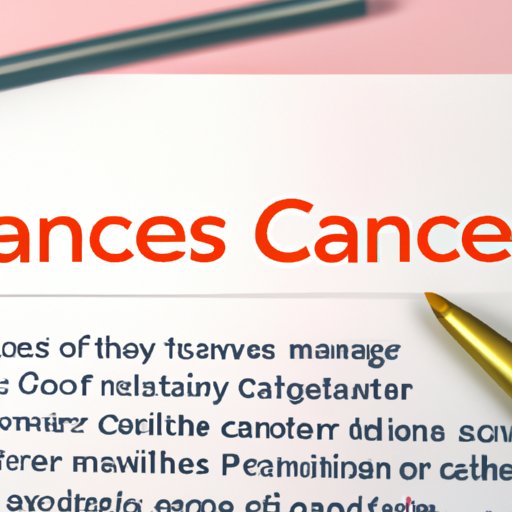
Introduction
Testicular cancer may not be a topic most men want to think about, but it is important to know the signs and symptoms so that it can be caught early and treated effectively. In the United States alone, approximately 9,000 men are diagnosed with testicular cancer each year. While it can be a serious disease, with early detection, it is also highly treatable. In this article, we will explore the common symptoms of testicular cancer, the importance of self-examination, risk factors, and available treatment options. We will also share personal stories from men who have battled or are still battling testicular cancer.
Symptoms of Testicular Cancer
The common symptoms of testicular cancer can include swelling, lumps, pain, and discomfort in one or both testicles. While these symptoms may not always be indicative of cancer, it is important to pay attention to them and get checked out by a medical professional.
Testicular pain or discomfort may not always be synonymous with testicular cancer. A dull or sharp pain or a feeling of heaviness in the testicle is usually a result of a minor injury, such as from a hit or an accident. In some cases, the pain may go away with a few days of rest and over-the-counter pain medication. If the pain is severe or lasts longer than a few days, it is essential to seek medical attention to rule out testicular cancer.
Lumps on or around the testicles are another common symptom of testicular cancer. These lumps may be small or large, hard or soft, and may or may not be painful. If a man detects a lump, it’s important to visit the doctor who will conduct a physical exam and recommend a testicular ultrasound to rule out any serious underlying health issues.
Some men may also notice swelling in one or both testicles. This could be due to testicular cancer, and swelling is often accompanied by pain or a feeling of heaviness in the scrotum. If swelling persists or worsens over time, it’s important to get checked out by a medical professional.
Self-Examination for Testicular Cancer
Regular self-examination of the testicles is an essential part of maintaining overall health. Men should examine their testicles once a month, ideally during a warm shower or bath when the scrotum is relaxed. The following are some steps to follow when performing a self-examination:
1. Inspect the skin of the scrotum for any irritation, swelling, or redness.
2. Examine each testicle by rolling it between your thumb and fingers to identify any abnormal lumps or swelling.
3. Look for signs of fluid buildup in the scrotum or any changes to the shape or size of the testicles.
If you find anything unusual during your self-examination, seek medical advice as soon as possible.
Self-examination is key to detecting testicular cancer early and could be a lifesaver. If a doctor confirms the presence of cancer, treatment can begin immediately, improving the chances of recovery.
Risk Factors for Testicular Cancer
Testicular cancer is most common in young men aged 15 to 35 years old, but it can affect men of any age. Other risk factors include:
– Family history: Men who have a history of testicular cancer in their family may be at higher risk.
– Abnormal testicle development: Certain conditions that affect testicular development, such as Klinefelter syndrome, can increase the likelihood of testicular cancer.
– Race: Testicular cancer is more common among Caucasian men than among men of other ethnicities.
– Medical history: Men who have received treatment for testicular cancer in one testicle are at a higher risk of developing testicular cancer in the other testicle.
– Environmental exposures: Exposure to certain environmental factors such as pesticides or chemicals used in manufacturing may increase the risk of developing testicular cancer.
Treatment Options for Testicular Cancer
If diagnosed early, testicular cancer can be effectively treated using a combination of surgery, radiation therapy, and chemotherapy. The specific treatment plan will depend on the stage of the cancer and other factors such as the patient’s overall health and age.
– Surgery: The testicle affected by cancer will be removed in a procedure called a radical orchiectomy. In most cases, this is a one-time procedure that can cure early-stage cancer.
– Radiation therapy: High doses of radiation kill any remaining cancer cells after surgery. Radiation treatment reduces the chances of the cancer returning.
– Chemotherapy: Drugs are used to kill cancer cells in the body. Chemotherapy is a common form of treatment for people with advanced testicular cancer. It may also be used if the cancer has spread to other parts of the body.
Personal Stories about Living with Testicular Cancer
Personal stories of men who have battled or are still battling testicular cancer can encourage others to take preventive measures. These stories bring to light the impact of testicular cancer and how it can change a man’s life.
Many men who have been diagnosed with testicular cancer have overcome the disease and gone on to live fulfilling lives. These stories provide hope and can inspire others to stay strong and never give up during difficult times. As a result, men who are going through testicular cancer can be reminded they are not alone and people have gone through similar experiences and came out at the other end.
Conclusion
Testicular cancer can be a life-changing diagnosis, but early detection and treatment can ultimately lead to a full recovery. It’s essential to know the symptoms of testicular cancer, maintain a regular self-examination routine, and seek medical advice in case any abnormalities are discovered. Being aware of risk factors, such as age, family history, and environmental factors can also help in early detection. Finally, personal stories from people who have experienced testicular cancer can serve as an inspiration and a reminder that testicular cancer is treatable and can be overcome. By raising awareness through education and stories, we can work towards reducing the incidence rates of testicular cancer.





